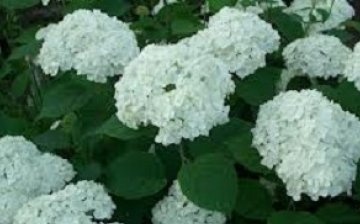Hydrangea
To create landscape design, many interesting plants are used, including the tree hydrangea. The main advantage of this shrub is that it looks spectacular in both single and group plantings. Typically used as a hedge.
The height of this plant can be from one to three meters. Distinctive characteristics of hydrangea tree-like is a rounded crown with pubescent shoots.
The scutellum inflorescences are composed of small white flowers. The diameter of each flower is about 2 centimeters.
Treelike hydrangea actively grows and develops from mid-May to early October. Abundant flowering is usually observed from the age of four between July and October. A distinctive feature of this shrub is its high resistance to frost. It is able to withstand sub-zero temperatures up to 30 degrees.
In order for the tree hydrangea to please with flowering for more than one year, it is necessary to choose good soil and water abundantly. It should be noted that the presence of a small amount of lime in the soil is not an obstacle to its development and flowering.
The easiest way to propagate hydrangea is considered to be layering. In early spring, one of the shoots is bent into a shallow groove (about 10 cm) and sprinkled with earth, and the top is gently bent up. With good loosening and watering, as well as adding soil, the plant should take root by the next season, after which it is planted from the main plant to another place.



